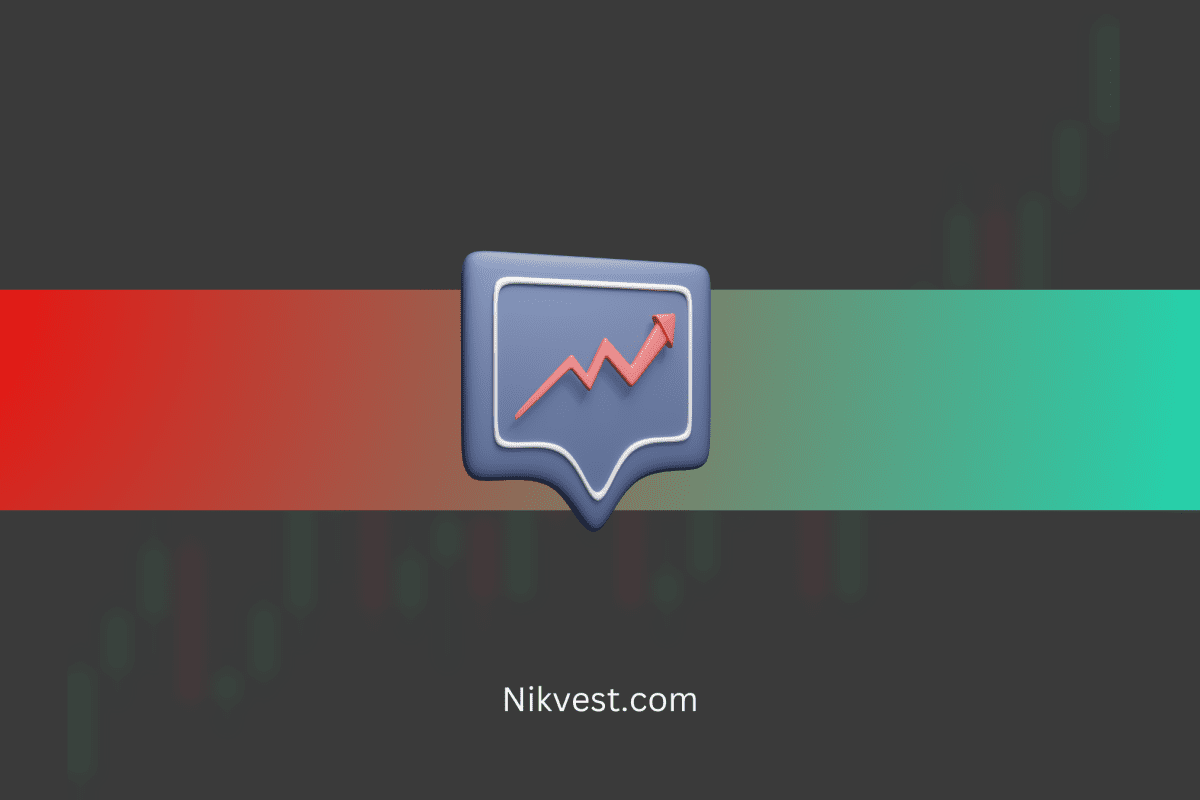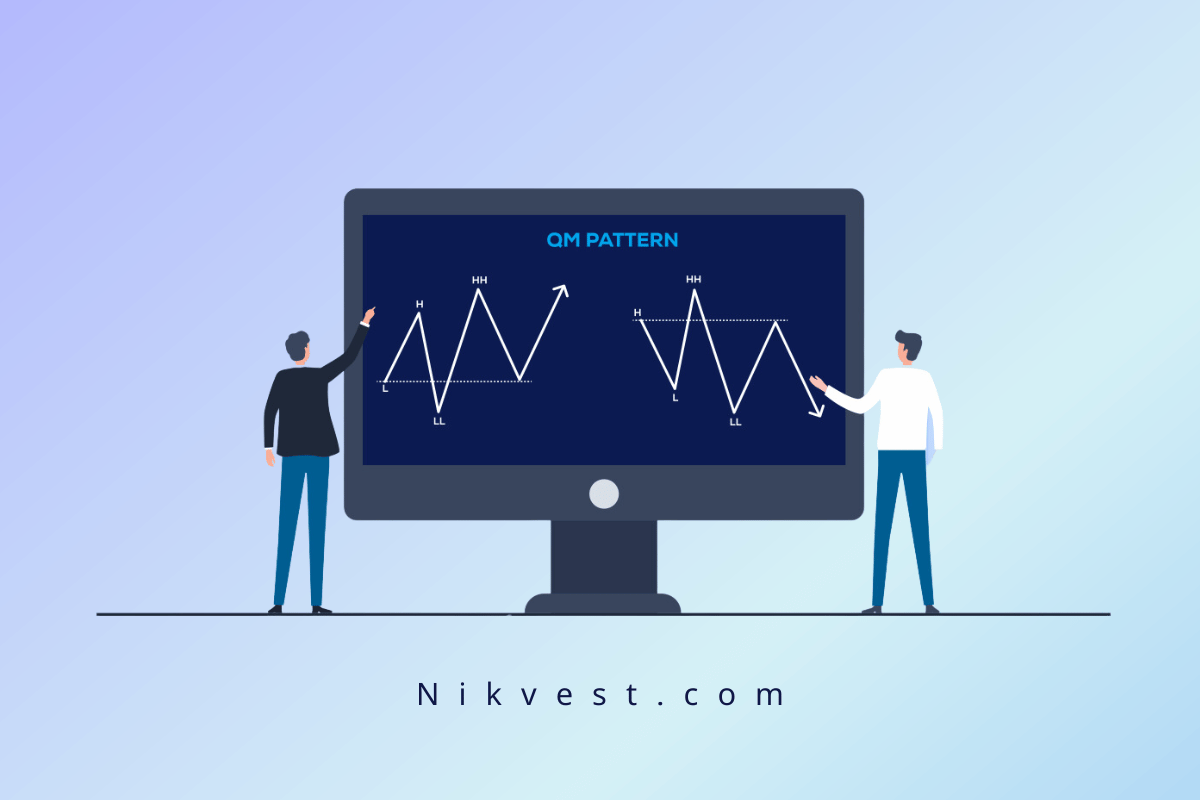Comprehensive Guide to ATR: Key Points Every Trader Should Know About the Average True Range
What is the ATR Indicator?
The ATR Indicator (Average True Range), introduced by Welles Wilder in 1978, is a critical tool in the technical analysis of financial markets. This indicator measures market volatility and is extremely useful in identifying high or low-volatility periods.
In essence, the ATR measures how much an asset typically moves during a specific time period. This information helps traders better understand market activity and assess the level of risk associated with a stock or asset. Therefore, if a stock exhibits significant price fluctuations, the ATR can be used to determine trading strategies.
For example, when a stock experiences a large price movement, the ATR can indicate to traders that the market is high-volatility, potentially creating buying or selling opportunities. On the other hand, if the ATR is low, it could indicate more price stability and a decrease in trading opportunities.
Participating in educational courses like those offered by Rahavard Academy can be highly beneficial in understanding concepts better and applying them more effectively in technical analysis. In these courses, you will become familiar with the principles and applications of the ATR and acquire the necessary skills to analyze financial markets more accurately.
What is the Difference Between Volatility and Momentum?
Volatility and momentum are two key concepts in technical analysis that focus on price changes and trend strength. Volatility refers to the price fluctuations relative to its average over a specific time period. When the price rises or falls significantly compared to its average, it indicates volatility. These changes can appear as strong bullish or bearish candlesticks on a price chart.
In contrast, momentum refers to the strength and direction of price movement. This concept indicates whether the current market trend is bullish or bearish and how powerful that movement is. For example, charts with high momentum usually show consecutive bullish or bearish candlesticks, indicating a strong trend in a specific direction.
In summary, while volatility examines price changes over time and reflects alternating price movements, momentum focuses on the strength and direction of a specific trend. Momentum helps analysts better understand the overall market trend. The ATR indicator can be useful for identifying market volatility because it measures average market fluctuations over a specific time period.
The formula for Calculating the ATR Indicator
The ATR (Average True Range) indicator is a critical tool in technical analysis that helps traders better understand market volatility. Understanding how ATR is calculated allows you to interpret its movements and changes more accurately.
To calculate ATR, you must first calculate the True Range (TR). TR consists of three components:
- The difference between the highest and lowest price in a given time period.
- The absolute difference between the current period’s highest price and the previous period’s closing price.
- The absolute difference between the current period’s lowest price and the previous period’s closing price.
The largest of these three values is selected as the TR.
The TR value obtained is divided by the number of time periods (n) to calculate ATR. The choice of the number of periods depends on your trading system, but generally, a range of 7 to 14 periods is recommended for more accurate results.
Remember that selecting a higher number of periods causes the ATR to react more quickly to market changes, while fewer periods slow the ATR’s response to changes. Flexibility in adjusting the ATR allows traders to tailor the indicator to their trading style and strategy.
How to Use the ATR Indicator
To effectively utilize the ATR indicator in analyzing market volatility, you can select different time periods to receive various signals. You are choosing a shorter time period, such as 4 days, alfourows for a more precise analysis of short-term price volatility.
To start, you must calculate each period’s True Range (TR). This is done by calculating the following three values:
- The difference between the highest and lowest price in each period.
- The absolute difference between the current period’s highest price and the previous period’s closing price.
- The absolute difference between the current period’s lowest price and the previous period’s closing price.
The largest of these three values is selected as the TR for each period. Once you have calculated the TR for all four days, you can determine the average TR, which represents the average volatility over that four-day period.
By choosing shorter time periods, the ATR provides quicker information about market changes, which is particularly useful for making short-term trading decisions. This practical method helps you adjust your trading strategies with a deeper understanding of market volatility.
Application of the ATR Indicator
The ATR (Average True Range) indicator is critical in technical analysis, particularly in determining trade stop-loss levels and exit points. When a stock has a high ATR, it indicates high price volatility. In such a situation, analysts set the stop-loss slightly lower for long positions and slightly higher for short positions to avoid unintended reactions caused by sharp price swings.
Conversely, when a stock’s ATR is low, it sustock’sthat the stock does not have significant price fluctuations. In this case, the stop-loss can be set closer to the entry point of the trade.
Therefore, the ATR helps traders improve their risk management strategies. By using ATR, traders can adjust their stop-loss and exit points based on the magnitude and intensity of price volatility, preventing excessive risk and potential losses. This approach is highly effective in capital management and increases the likelihood of trade success. As an analytical tool, the ATR provides valuable insights into market behavior and price dynamics, playing a key role in trading decisions.
The ATR indicator, which plays an important role in determining the price range, is helpful in technical analysis. As a relative index, this indicator holds even more importance in identifying market volatility. Due to its relative nature, comparing the current ATR values with past values is essential for more precise analysis. This comparison allows traders to gain a better understanding of market behavior.
One of ATR’s critical applications is setting stop-loss and exit points for a trade. For example, suppose you plan to trade the GBP/USD currency pair in the forex market. If you are buying, you expect the trade to be profitable with a price increase or result in a loss if the price decreases. Similarly, if selling, the goal is to profit from a price decrease and avoid losses in case of a price increase. ATR helps you determine the appropriate exit point from the trade, regardless of where your entry point into the market was.
By using ATR, traders can more confidently determine their entry and exit points, especially in markets with high volatility. This indicator provides insights into the level of market volatility, helping traders fine-tune their trading strategies with greater precision and avoid potential losses.
ATR Indicator Settings
Understanding and correctly setting the ATR indicator’s parameters is crucial for effectively using it in technical analysis. After adding the ATR indicator to your advanced chart, you can access the settings through the Settings section.
In the Inputs section of the settings, the ‘Length’ option allows you to define the period for calculating the average true range. By default, this value is set to 14. This means that ATR calculates the volatility for 14-day, 14-week, or 14-month periods, depending on the chosen time frame on the chart.
Reducing the ATR period is recommended for traders interested in short-term trades and who wish to conduct analyses over shorter time frames. This leads to receiving more signals, but it’s important to note that this increase in signals may also raise the risk of errors. Conversely, for traders focused on longer time frames, increasing the ATR’s calculation period is beneficial.
Additionally, from the “Style” section, you can “custom” the appearance of the ATR indicator. This includes changing the color and thickness of the indicator line, which helps you clearly see the indicator on the chart and perform a more precise analysis. These settings allow you to align the ATR with your other analytical tools and achieve a more comprehensive trading strategy.
How to Generate Signals with the ATR Indicator
The ATR indicator, designed to assess market volatility, provides both buy and sell signals. However, many technical analysts use this indicator primarily to generate exit signals from trades, as experience has shown that this approach often yields better results.
Using ATR to determine exit points can help traders identify situations where the market is more volatile and, therefore, presents a greater risk for maintaining current trading positions. This is particularly useful in markets with significant volatility, such as the forex market or high-volatility stock markets.
In addition, ATR can be used as a tool to set stop-loss levels. By measuring the usual market volatility, ATR helps traders place their stop-loss orders in locations where they are less likely to be triggered unintentionally.
While ATR can help identify buy and sell signals, its primary application is determining exit points and adjusting risk management strategies. This indicator, by providing precise information about market volatility, helps traders make more informed decisions and, as a result, achieve greater success in their trades.
ATR Indicator in MetaTrader and TradingView
The ATR indicator is one of the critical tools for critical technical analysis and is easily accessible on platforms such as MetaTrader and TradingView. This indicator is available by default in MetaTrader, and there’s no need for a septhere’sownload. To activate ATR in MetaTrader, click on the ‘Insert’ option from the’ op men’, then select ‘Indicators’ and finally ‘Oscillator’,’ where you ‘an find ATR’ n the list.
When you select ATR, a settings window will open where you can specify your desired time period. This period, which is set to 14 by default, defines the number of candles used to calculate the Average True Range. It’s essential to note that more extended periods provide fewer but more reliable signals.
To add ATR to your chart in TradingView, first go to the TradingView website and select the currency pair or asset you want to analyze. For example, to analyze Bitcoin, choose the BTC/USD pair and then click the ‘Indicators’ option from ‘the top bar.’ By searching for ATR in the search field, you can find this indicator and add it to your chart.
These methods allow you to perform more precise market analysis using ATR and gain a deeper understanding of market volatility.
Who Should Use the ATR Indicator?
The use of the ATR indicator is generally recommended for forex traders at all levels, whether they are beginners or professionals. While ATR does not directly display market trends, it is a highly effective tool for better understanding market volatility and managing risk by providing accurate information about market fluctuations.
The ATR indicator identifies market volatility, helping traders make more informed decisions about their stop-loss levels and exit points. It is particularly useful for traders looking for lower-risk strategies or those wanting to better understand market volatility.
Additionally, ATR is compatible with various trading styles. Whether in short-term or long-term trades, this indicator can be an effective market analysis tool. Traders can align ATR with their trading strategies by adjusting its time period to achieve better results.
In the end, using ATR can help any trader, regardless of style and experience, gain a deeper insight into market fluctuations and succeed in managing risk and making trading decisions. This indicator holds a special place among the essential tools used by traders in technical analysis.
Limitations of the ATR Indicator
Despite its significant capabilities in technical analysis, the ATR indicator has certain limitations that may make some traders hesitant to use it.
One of the main limitations of ATR is that its interpretation is entirely subjective, and there is no specific standard for analyzing it. This means that each trader may have a different interpretation of the data provided by this indicator, which can lead to varying results in trading strategies. Additionally, ATR does not provide a specific value to predict the reversal or continuation of a trend.
Another important limitation of ATR is that it only shows the extent of price volatility and does not provide any information about the direction of the market trend. This makes ATR insufficient as a standalone tool for comprehensive market analysis. To gain a better understanding of market direction and dynamics, it is recommended that ATR be used alongside other technical analysis tools, such as trend and volume indicators.
While ATR is a useful tool for understanding market volatility, traders should be aware that using this indicator requires combining it with other tools and sufficient knowledge of technical analysis to get the most out of it.
In Conclusion…
In this article, we familiarized ourselves with the ATR indicator, a practical tool for analyzing market volatility. This indicator is usually displayed at the bottom of charts for various stocks or currencies, helping analysts better understand price fluctuations. We also explained how to calculate this indicator using examples.
One prominent advantage of the ATR indicator is that it is not limited to a specific time frame. Therefore, traders can use ATR in all time frames for buy and sell signals.
One of the main applications of ATR is setting trailing stop-losses. This indicator allows traders to set appropriate stop-loss levels by considering current market volatility. Additionally, ATR can help decide the reliability and validity of price fluctuations.
However, to perform a more precise analysis and enter trades with greater confidence, it is recommended to use a combination of indicators and other technical analysis tools. This can help reduce errors and risk while increasing the success and profitability of trades.




















































